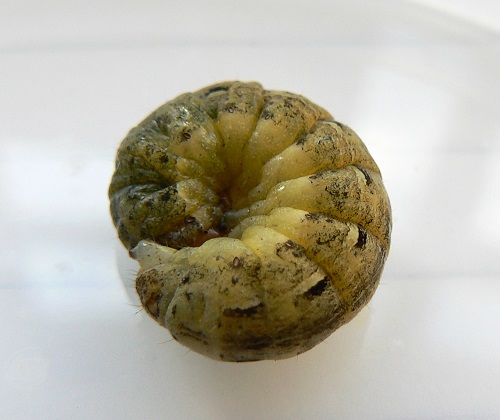With summer well and truly in full swing, more and more people will be spending time in the garden tending to their plants. For those of you whose fingers are greener than most, you will understand how devastating it can be to find that your vegetable crop has been destroyed by unwelcome pests.
Whether they are airborne or soil borne, all of your hard work and patience can be undone by these invaders, which is why Empire Pest Control has put together this brief guide on how to spot some of the worst offenders and what you can do about them!
Cutworms
Arguably the single most destructive pest on this list, Cutworms actually cut the stems of plants off at ground level, killing them in one foul swoop. What’s worse, these worms tend to do their dirty work at night, meaning you’ll often find out that you have a problem after it’s too late.
Cutworms are the larvae of Millers moths and come in a variety of colours, including green, brown, red and black. One method of identification involves poking them, as they will curl up into a recognisable C shape. Prevention is the only cure and the best way to foil these pests is to install barriers around the base of your plants, these can be made from yogurt pots or even cardboard. There are also a number of predators that feed on cutworms including toads, bats and parasitic wasps.
Aphids
These ubiquitous green critters aren’t too harmful by themselves, but in large numbers they can cause severe damage to leaves. Also, they will attack and eat pretty much anything in your garden, meaning that you can lose a lot of vegetables in short order to these ravenous pests.
Aphids produce a sticky mildew which leaves plants looking sooty or blackened. A good way to combat them is to spray the underside of your leaves and plants with a strong stream of water. Luckily, aphids have a lot of predators, the most common of which is the ladybird; lacewings and damselflies also eat aphids. In addition, aphids have a strong aversion to mint, so be sure to plant some as a deterrent.
Pea Moth Caterpillar
Found in vegetable gardens all over the country, these troublesome little pests are laid by moths onto pea plants where they later destroy the entire crop. In the worst situation you won’t know you have an infestation until you open the pods for shelling and inside you will find several little caterpillars eating the peas!
The best defence is often the best offence, so be sure to grow your peas under an insect resistance mesh. There are also a number of chemicals available which deter the moths from laying their eggs. There are also quick-maturing types of pea available, which means they have grown and matured outside of the moth’s egg laying season.
Flea Beetle
These little black beetles, so called because of their ability to jump long distances, can cause unmitigated damage to anything they take a liking to. In short, if any of your plants are peppered with little holes, then it’s likely you have a flea beetle infestation; to make matters worse, while the adults eat the leaves and stem, their larvae will feast on the roots, killing the plant.
These little beetles are attracted to hot, dry soil so keep your plants well watered. Also, something of a home remedy, if you leave a bowl of beer out then the beetles will be attracted to it and they will drown. Lastly, similarly to pea moth caterpillars, be sure to cover your crops with an insect proof mesh.
If you find your garden or your home overwhelmed and you need some pest control in London, then get in touch with Empire Pest Control today. We have experience dealing with a wide variety of pests and infestations and we will have the situation under control as quickly as possible!






